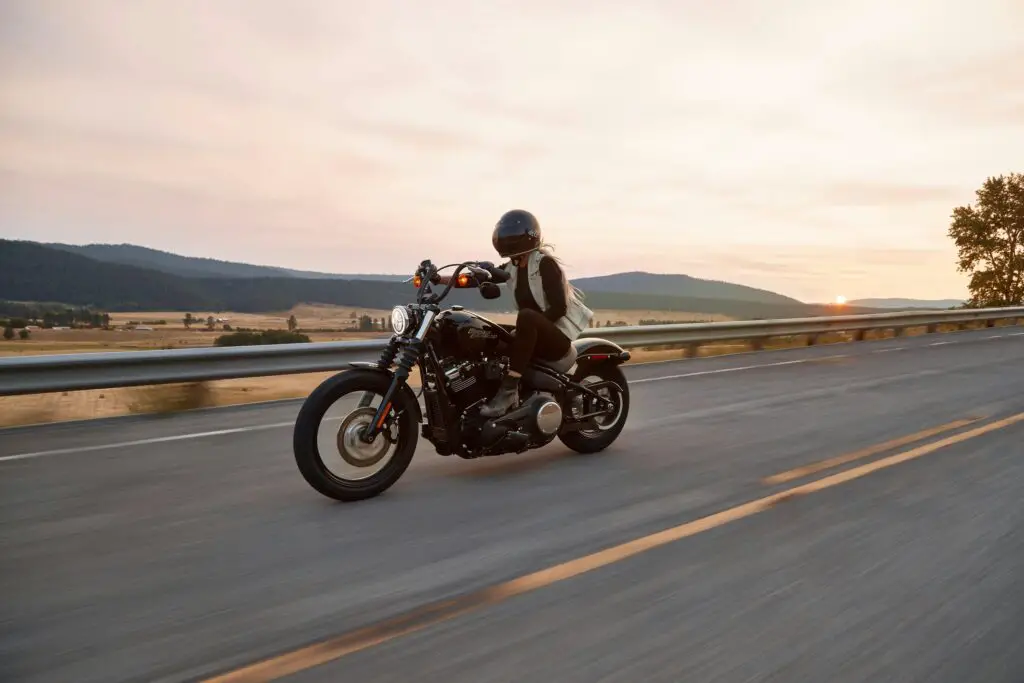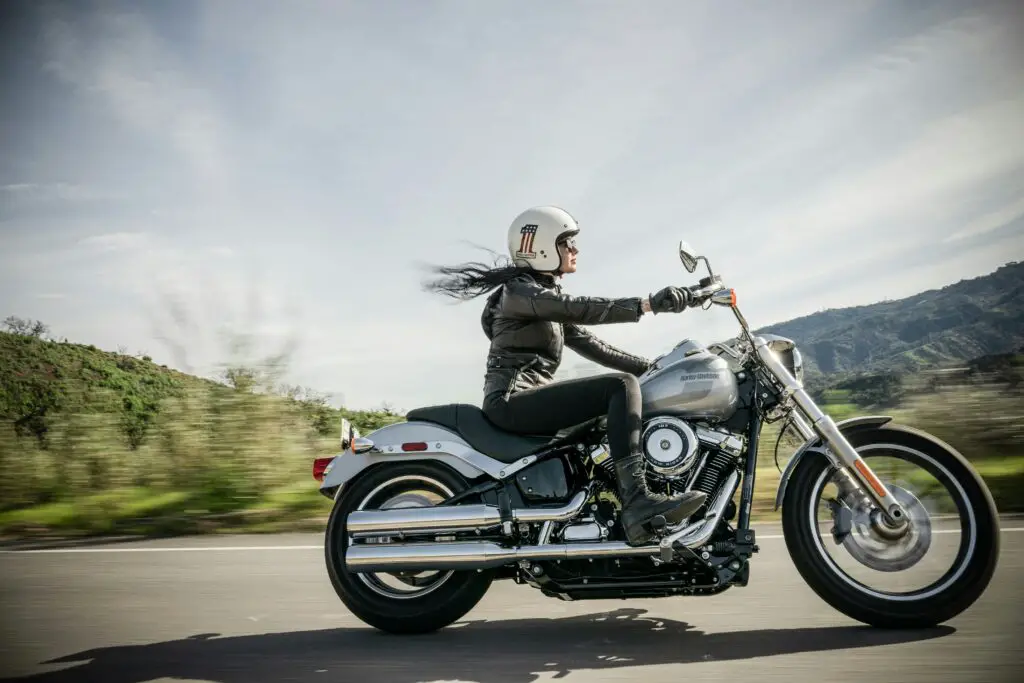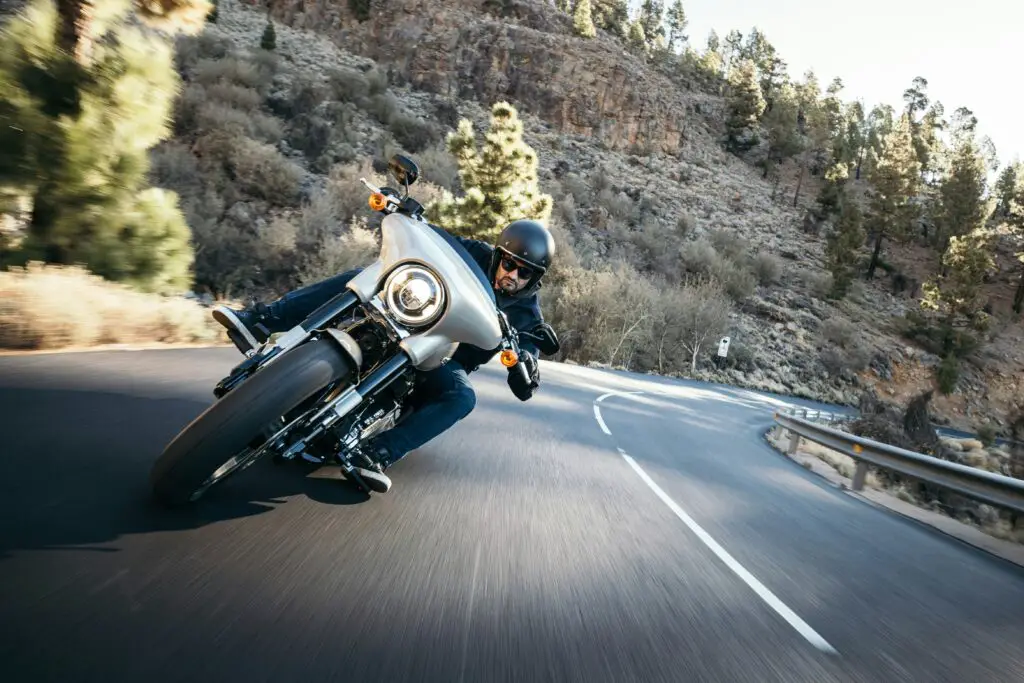Despite their dangers, lane splitting and shoulder surfing are two things motorcyclists commonly do. It may surprise you that these actions are usually illegal in most states. In response to lane splitting and shoulder surfing, most drivers don’t know how they should act. Some get angry and drive recklessly. Others press the brakes and stall traffic while figuring out their next move. If you have encountered one of these behaviors on the road, keep reading. Today, we will cover the differences and legality of lane splitting vs shoulder surfing.
Lane Splitting and Shoulder Surfing On the Web
It is almost guaranteed that a lane-splitting video will go viral on the web every few months. Take, for instance, the viral video below, which shows a car getting aggressive with a motorcycle that is shoulder surfing.
The video presumably comes from a camera attached to the motorcyclist’s vehicle. It initially shows the rider stopped on the side of the highway, likely preparing to do some shoulder surfing. When he tries to enter the actual lanes of the road, a white car quickly swerves off into the shoulder to stop him. Luckily, no one is seemingly hurt, but the car gives the motorcyclist a dangerous scare.
In response to the white car speeding away, the biker rushes forward to catch up. At the end of the clip, the motorcyclist catches up with the car and asks the driver to roll down the window. Although we don’t see what happens next, we can all assume that more fighting and arguing is in store for the two.
An Attorney’s Opinion
To help alleviate some of the video clip’s confusion, viral TikTok attorney Ugo Lord has chimed in with some professional wisdom. He first posits that driving on the shoulder is unlawful in most regions in the U.S. If you do something unlawful and get into an accident, you will surely be held responsible.
In the video clip, however, the car and the motorcycle were unlawfully driving into the shoulder. With the video evidence, it is presumable that the vehicle went into the shoulder as an aggressive action to stop the motorcycle from passing him. Despite both parties breaking some laws, the aggressive, knowingly dangerous behavior would likely make the Sedan ultimately liable.
Lane Splitting vs Shoulder Surfing

Many terms describe biker behavior on the road. Some, like lane splitting, are widely known, while others, such as shoulder surfing and lane filtering, are less familiar. With the abundance of terms, delineations between the behaviors can get confusing. For this explanation, we will examine the definitions of lane splitting and shoulder surfing alone.
Lane Splitting
Otherwise known as “white lining,” lane splitting is a behavior many motorcyclists exhibit. It occurs when motorcyclists ride between two designated lanes of traffic or on the white lines of the road.
Lane splitting is an incredibly controversial topic. Some people think it can alleviate road congestion and allow bikers to get to their destination quicker. Others believe it is dangerous and can cause confusion amidst troubling traffic situations. Due to this, lane splitting can easily lead to road rage.
The legalities of lane splitting rely heavily on where you are located. In some regions, it is staunchly illegal. California is the only state that directly allows lane splitting. Other states may have similar laws for lane filtering or shoulder surfing. Usually, these laws fall under state control.
Shoulder Surfing
Shoulder surfing is a similar biking behavior that involves using the highway’s shoulder. Generally, it occurs when motorcyclists drive on the shoulder of the road. It can happen anytime; however, most motorcyclists resort to shoulder surfing when there is heavy traffic. Many will use this tactic to avoid traffic and go farther in stopped-up lanes.
Much like lane splitting, shoulder surfing laws depend on your location. Some states may allow it or similar behaviors, while others consider it an offense punishable by law.
Shoulder Surfing and Lane Splitting With Accident Claims

As described by attorney Ugo Lord, shoulder surfing is usually illegal in the U.S. Under general law, someone exhibiting unlawful behavior is generally responsible for damages caused by accidents. Thus, the vast majority of motorcycles that are shoulder surfing are liable for damages that may occur in an accident.
In a few states, contributory negligence rules apply. This means that someone who is even partly responsible for damages cannot claim to recover damages.
Most states use comparative fault rules. This means that someone who is partly responsible can still file a claim and recover partial compensation from other responsible parties.
The bottom line is that engaging in dangerous or illegal behavior like lane splitting is not a good idea for safety and sharing the road with others. If these behaviors lead to an accident, your actions can make it extremely hard to seek compensation for damages.

